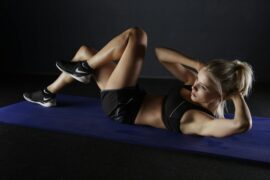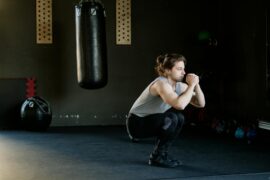Rucking is movement, typically walking or marching, with a backpack on your back. Sounds deceivingly simple, right? This style of training has been used by the military for many years. It has also been implemented into police training and is often used by other tactical athletes, avid hikers, and well-versed gym-goers as well. It is a form of cardio that is challenging, has a strength component, and is less monotonous than machine-based options.
The name comes from the term “rucksack,” which is what backpacks are referred to as in the military. The backpacks are weighted down with gear or weights, which is what makes rucking such an intense and beneficial training style. This style of training has been deemed as the fitness trend for men for this past year, 2017.

How to ruck
“A Systematic Review of the Effects of Physical Training on Load Carriage Performance” done by Knapik et. al (2012), recommends that the best results are gained when beginning with one rucking session per week in combination with three resistance training sessions, and then increasing the load and mileage in the weeks to come. The review suggests starting with a 20-pound load for one mile, and then increasing the load by five pounds and one mile each week for eight weeks.
To prevent injury, preserve joint health, and perform the exercise correctly, you should never run. Rucking is to be performed in a walking or marching manner, which can still be performed at a high speed or fast pace. Rucking is intended to be a lower impact, but an intense cardio option. When packing your backpack, you want to ensure that the ruck isn’t sagging at all and that the heaviest items are closest to your back. The further away the load is from the body, the less joint-friendly and higher-impact rucking becomes.
The benefits of rucking
According to the Compendium of Physical Activities, one will burn twice as many calories walking with a load on their back as they would walking at the same speed on the same terrain without a load. You’re moving extra mass, which requires more work, and in turn, more calories expended.
Billy Richards, an endurance athlete, powerlifter, experienced personal trainer, and Army and Marine combat veteran states, “Your shoulders, traps, core, back, hips, glutes, legs and stabilizer muscles get stronger from rucking.” This is due to the fact that you are having to maintain good posture and bracing your core as a means of injury prevention while moving extra weight for a long duration and navigating the terrain.
The benefits of rucking transfer into everyday life. You’ll be stronger, more athletic, shed fat, improve your endurance, and you’ll strengthen your core and lower back. Regardless of what your fitness goal may be, rucking will benefit you in some way.
Whether you choose to ruck outdoors, or indoors on the treadmill or stairs, be sure to train hard and train smart. We can’t wait to see what the favorite new fitness trend will be in the upcoming year!
If you’re up for a challenge, give the rucking workout below a try.
Rucking workout
Ruck 1 mile
Perform the strength portion of the workout as a circuit, doing 3 sets of 12-20 reps:
Front squats
Bent over rows
Push press
Lunge with rotation
Plank with the ruck on your back
Ruck 1 mile
As you progress, keep in mind that you always want to increase duration before increasing intensity.
Video credit: Fit RUCK and Mettle Forger
Sources:
Knapik, Joseph J, et al. “A Systematic Review of the Effects of Physical Training on Load Carriage Performance.” Journal of Strength and Conditioning Research, vol. 26, no. 2, 2012, pp. 585–597., doi:10.1519/jsc.0b013e3182429853.







